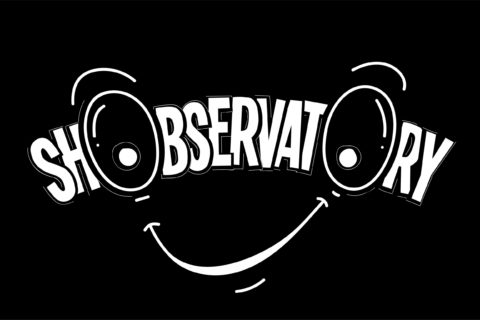I have always been a ‘straddler.’ I’m a middle child. I had friends in the school play and on the field hockey team. I have a turntable and an Apple watch. And I’ve been marrying best practices from private and public sector research for most of my career.
As a straddler, I’ve often been struck at how researchers from different sectors can talk past one another without necessarily realizing it. I’ve also found myself wondering whether the different language and terminology used in market and social research is a matter of professional jargon or real differences in approaches. Naturally, the answer is a bit of both.
My aim in this article is to point out some of the main similarities and differences between market research and social research, in the hope of helping researchers in both sectors bridge some gaps and advance conversation, appreciation and collaboration around research on social impact.
As Research World readers know all too well, market research is a core element of the marketing function and helps businesses understand and grow their customer base and market share. Market research is funded by the private sector who benefit from the proprietary data and insights. Market researchers share a common vocabulary, using terms such as brand awareness, consumers and consumer insights, retention and conversion, usage & attitudes, return on investment, etc. In contrast, the social research sector most often works to benefit the public good—public policy, public services, and public communication and trust. It is typically funded by government, foundations, charitable, not-for-profit and academic organizations and it seeks to promote knowledge, learning and accountability for effective use of public funds. Social research has its own terminology as well—knowledge, attitudes and practice (KAP); beneficiaries and marginalized and vulnerable populations; human-centred design; monitoring and evaluation; outcomes and impact, etc.
In the past couple of decades, there has been a growing and welcome convergence between market and social research with the rise of the now $500 billion impact investing market and its emphasis on the triple bottom line (people, planet, profits); the urgency and opportunity around sustainability and the shared global Sustainable Development Goals, and increased corporate recognition that social impact is a critical business performance metric that extends beyond CSR. In addition, public institutions are supporting programming intended to facilitate market growth and development in ways that will promote positive social impact, as well as making investments in private sector firms and social enterprises to support social impact objectives (e.g., financial inclusion).
For the private sector research community, the result of these trends has been some deep thinking, meaningful collaboration and terrific work on how best to define and measure social impact and social return on investment. Indeed, a whole multi-disciplinary industry has sprung up to meet the challenges, including frameworks, standards, toolkits, and players from research agencies and management consultancies to academia and boutique tech firms. This sector has drawn on social research in at least three important ways:
- Use of specific frameworks – logic models, impact pathways or theories of change – to make explicit the underlying assumptions for how and why a strategy or initiative will bring about a desired result. These frameworks, typically used in the government and not-for-profit sectors, require stakeholders to agree on what success looks like, how they will achieve it, and how they will know they are on the path to succeeding. Definition of the inputs, activities, outputs, outcomes and impact then allows for development of meaningful indicators and measurement strategies.
- Distinction between attribution – what outcomes did a specific program or intervention directly cause compared to what would have happened anyway without the intervention, and contribution – to what extent did an intervention contribute to achieving a specific outcome. These distinctions are particularly important when trying to understand social impact in complex systems and environments.
- Sampling approaches that are inclusive of populations who would typically not be included in a market research study. Such populations include those beyond urban and peri-urban areas, may not have access to mobile phones or the internet, may not be literate, and maybe marginalized or vulnerable. Attempts to measure social impact without including such populations may fall short.
At the same time, on the more traditional social research side, and particularly in the international development sector that I focus on at Kantar, there has been growing interest in the private sector as a key actor in driving social impact, and in adopting more cutting-edge private sector approaches to generating data and insights. Factors driving this include the economic growth in many developing country markets; the rapid increase in mobile phone penetration allowing quicker access to more remote and lower-income populations; the need to integrate ‘big data’ on consumer and citizen behaviour; and increasing pressure on funders to accelerate scale up and demonstrate impact in their programs. (In 2019, overseas development assistance from developed to developing countries amounted to $153 billion and governments need to demonstrate to taxpayers the effectiveness and impact of this assistance.)
Three trends illustrating the influence of commercial market research on research in the development sector include:
- Moving from beneficiary to consumer or client – seeing respondents less a passive recipient or beneficiaries of development programs, and more as consumers or clients who need to be reached, engaged and satisfied. With this mindset shift, a whole realm of consumer research tools become applicable.
- Exploring emotional drivers in behaviour change – moving beyond assumptions that people will change only on the basis of improved awareness, knowledge and understanding. Techniques to understand underlying emotional triggers, automatic responses and heuristics – as often used in brand research – are helping development practitioners fine-tune their programs and messaging.
- Integrating digital into research design and analysis – using social media platforms for recruitment, internet platforms for online discussions, chatbots for ongoing feedback, platform data as a source of real time behavioural data, etc. enable social researchers, just as market researchers, to engage respondents in different ways and to provide a more holistic picture of social impact than traditional face-to-face surveys and qualitative research.
Given current global health and economic crises and concurrent calls for equity and sustainability, the need for nuanced and meaningful understanding of how to achieve and how to measure social impact under complex conditions will continue to grow. The more private and public research sectors learn from and benefit from one another, the better positioned we will all be to respond to that need.


